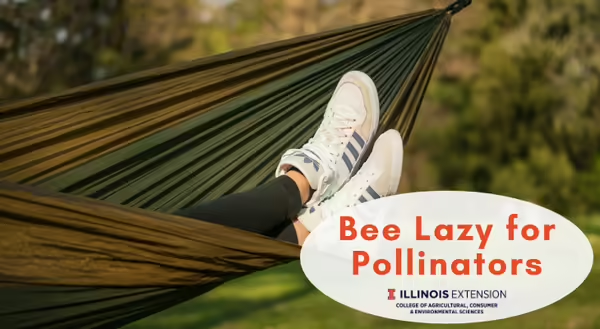
It’s National Pollinator Week (June 22-28, 2020)! Pollinators are vital to life as we know it. Around seventy-five percent of all plant species are pollinated by animals (and 90% of flowering plants). While we tend to focus on bees, particularly honey bees, many different animals will pollinate plants. Insects such as butterflies, moths, flies, beetles, and wasps as well as some birds and bats will also pollinate plants.
Without pollinators, we wouldn’t have fruits and vegetables like apples, broccoli, carrots, cucumbers, herbs, peaches, raspberries, and watermelons. Not only are they important for your backyard garden, there’s a lot of money at stake too. Pollinators’ impact on agriculture is worth around $29 billion in the U.S. alone and between $235 billion and $577 billion worldwide.
We tend to focus on the importance of pollinators when it comes to our food. They are also important for landscape plants, as well as those out in ‘nature’. The plants they pollinate are food for other animals (birds, mammals, and insects). The pollinators themselves are also food sources. Without pollinators, there would be far less plant and animal diversity in our natural areas.
When we talk about ways we can help pollinators, they’re often additional things we should do, such as planting more flowers. Let’s face it; we’re all busy, and sometimes we don’t have the time or the energy to ‘do more stuff’. So, what are some things we can stop doing to help pollinators?
Stop using so many chemicals on your lawn and garden. Americans spend billions of dollars and apply millions of pounds of pesticides every year on their homes and gardens. When we think of the stereotypical lawn, it’s a nice uniform green color. While this green uniform lawn may be appealing to some people, it’s not all that great for pollinators. Herbicides, whether a weed and feed or an herbicide by itself, commonly target broad-leaved plants such as clover and dandelions. These plants can be import floral resources for pollinators. The more diversity, i.e., ‘weeds’, in your lawn, the more attractive and beneficial it will be to pollinators.
Additionally, be careful when treating for grubs in your lawn, some products are toxic to pollinators. Before applying insecticides to your lawn, make sure to scout your lawn to see if you even need to apply an insecticide in the first place. Taking steps to make your landscape less attractive to grubs, such as reducing irrigation during late July and early August (one more thing you don’t have to worry about doing), can also help reduce the need for insecticides.
When it comes to the garden, it’s okay to have some feeding damage on your plants. Think of it as a sign of a potentially healthy ecosystem. However, if your plants are being defoliated or your fruit are being devoured, you may need to go the route of using pesticides. Often times though, other management strategies can be used to help reduce problems from the start.
Become a lazy lawnmower and stop mowing your lawn so often. Frequent (weekly) mowing can give lawns a uniform, clean and tidy look. This look isn’t very good for pollinators, though. Frequently mown lawns typically have few flowers available for pollinators to visit and become a ‘green desert’. Simply mowing every two or three weeks, instead of weekly, can significantly increase the number of flowers present. Not only will you have food for pollinators, but you can also add some color and beauty to your lawn. If you decide to go this route, make sure to check on any regulations regarding lawn height where you live.
If you don’t want to be ‘that person’ in the neighborhood that has the unruly yard (It’s okay if you are, I’m one of them), you can opt for the ‘landscape mullet’. Just like the haircut, it’s business in the front and party in the back. You can cut your front lawn more frequently to have a nice manicured look. Then in the back yard, you opt to mow every two or three weeks to help increase the number of flowers for your pollinator party.
Good Growing Tip of the Week: Bug zappers are also bad for pollinators and beneficial insects. While they’re typically used to control mosquitoes, research has shown they catch relatively few of them. Instead, they kill numerous beneficial insects like moths and non-biting midges.
Want to get notified when new Good Growing posts are available? SIGN UP HERE!